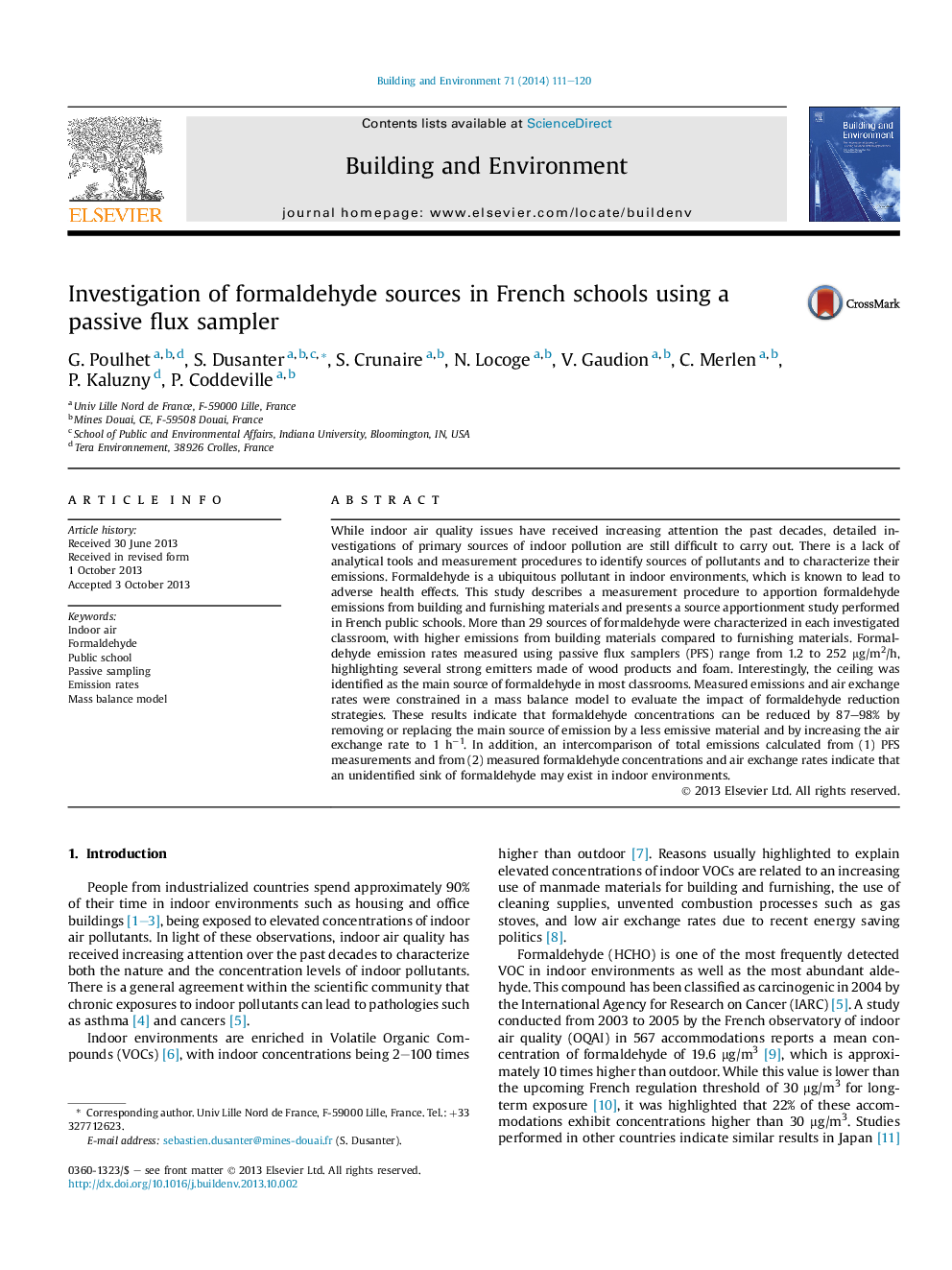| کد مقاله | کد نشریه | سال انتشار | مقاله انگلیسی | نسخه تمام متن |
|---|---|---|---|---|
| 248241 | 502555 | 2014 | 10 صفحه PDF | دانلود رایگان |
• Methodology developed to apportion formaldehyde emissions from building and furnishing materials in indoor environments.
• Identification of the main sources of emission in 8 public schools.
• Evaluation of formaldehyde reduction strategies using a mass balance model.
• An unknown sink of formaldehyde may be operating in indoor environments.
While indoor air quality issues have received increasing attention the past decades, detailed investigations of primary sources of indoor pollution are still difficult to carry out. There is a lack of analytical tools and measurement procedures to identify sources of pollutants and to characterize their emissions. Formaldehyde is a ubiquitous pollutant in indoor environments, which is known to lead to adverse health effects. This study describes a measurement procedure to apportion formaldehyde emissions from building and furnishing materials and presents a source apportionment study performed in French public schools. More than 29 sources of formaldehyde were characterized in each investigated classroom, with higher emissions from building materials compared to furnishing materials. Formaldehyde emission rates measured using passive flux samplers (PFS) range from 1.2 to 252 μg/m2/h, highlighting several strong emitters made of wood products and foam. Interestingly, the ceiling was identified as the main source of formaldehyde in most classrooms. Measured emissions and air exchange rates were constrained in a mass balance model to evaluate the impact of formaldehyde reduction strategies. These results indicate that formaldehyde concentrations can be reduced by 87–98% by removing or replacing the main source of emission by a less emissive material and by increasing the air exchange rate to 1 h−1. In addition, an intercomparison of total emissions calculated from (1) PFS measurements and from (2) measured formaldehyde concentrations and air exchange rates indicate that an unidentified sink of formaldehyde may exist in indoor environments.
Journal: Building and Environment - Volume 71, January 2014, Pages 111–120
